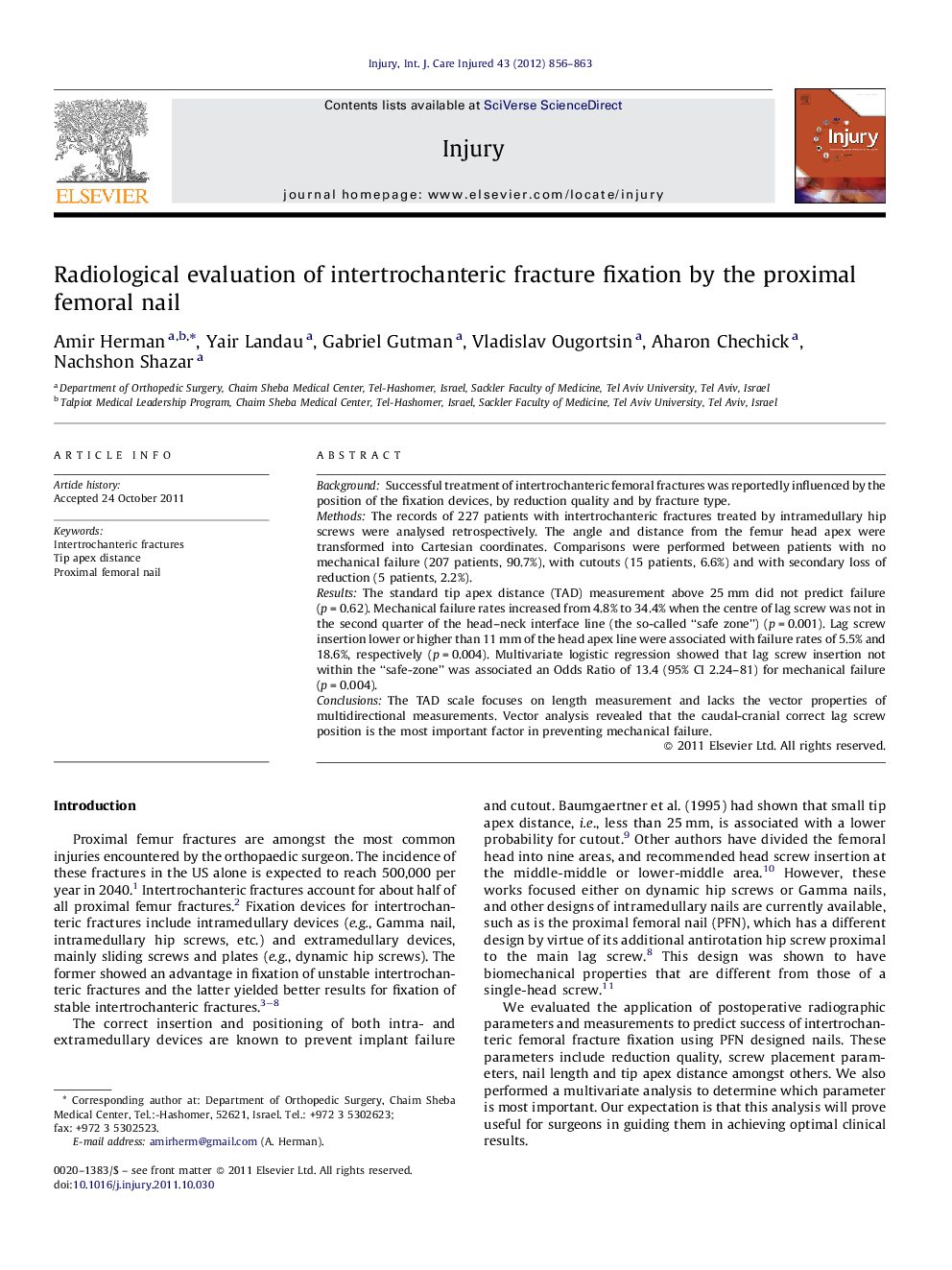| کد مقاله | کد نشریه | سال انتشار | مقاله انگلیسی | نسخه تمام متن |
|---|---|---|---|---|
| 3239664 | 1206015 | 2012 | 8 صفحه PDF | دانلود رایگان |

BackgroundSuccessful treatment of intertrochanteric femoral fractures was reportedly influenced by the position of the fixation devices, by reduction quality and by fracture type.MethodsThe records of 227 patients with intertrochanteric fractures treated by intramedullary hip screws were analysed retrospectively. The angle and distance from the femur head apex were transformed into Cartesian coordinates. Comparisons were performed between patients with no mechanical failure (207 patients, 90.7%), with cutouts (15 patients, 6.6%) and with secondary loss of reduction (5 patients, 2.2%).ResultsThe standard tip apex distance (TAD) measurement above 25 mm did not predict failure (p = 0.62). Mechanical failure rates increased from 4.8% to 34.4% when the centre of lag screw was not in the second quarter of the head–neck interface line (the so-called “safe zone”) (p = 0.001). Lag screw insertion lower or higher than 11 mm of the head apex line were associated with failure rates of 5.5% and 18.6%, respectively (p = 0.004). Multivariate logistic regression showed that lag screw insertion not within the “safe-zone” was associated an Odds Ratio of 13.4 (95% CI 2.24–81) for mechanical failure (p = 0.004).ConclusionsThe TAD scale focuses on length measurement and lacks the vector properties of multidirectional measurements. Vector analysis revealed that the caudal-cranial correct lag screw position is the most important factor in preventing mechanical failure.
Journal: Injury - Volume 43, Issue 6, June 2012, Pages 856–863